phpMyAdmin is a Database Administration tool, used for managing the MySQL & MariaDB databases, and it is available in the phpMyAdmin website for cost free as an open source software applications. It was originally written in the PHP scripting language, in order to work around more than one database and related servers. This tool is known for its special features like the provision to import & export multiple formatted files, a web interface, QBE or query by example, global search wizard, database management, and to watch over the current progress for parameters like CPU consumption, database connection range, real time reports, etc.
ADVERTISEMENT Popular Course in this category PHP DEVELOPER - Specialization | 8 Course Series | 3 Mock TestsStart Your Free Software Development Course
Web development, programming languages, Software testing & others
In order to install the phpMyAdmin tool, obviously, one needs to have the desired database installed in their computer. It helps when the database servers are connected and the phpMyAdmin is enabled, in order to perform the database management activities. The prerequisites are the most important part, which needs to be taken care of before actually using the phpMyAdmin tool. Keeping this in check leads to the uninterrupted proper functioning of the utilization of this tool, as the minor glitches can be discouraging and tiresome in the hour of need.
There are two ways for installing the phpMyAdmin tool, and both of them need to have the database installed in the computer being installing this tool. Below are the few other prerequisites with respect to the installation processes used.
The Installation process and steps are different for the two different techniques of setting up a phpMyAdmin application on the computer. Below are the steps for working on the same.
Step 1:Open the web browser and go to the link: https://www.phpmyadmin.net (Fig. 01) from there. Use the direct link, or google as ‘phpMyAdmin download’ and use the first link from the results.

Step 2:The phpMyAdmin application website opens up (Fig. 02), to download the latest version of phpMyAdmin. Please note, the latest version is 5. 0. 2, as of June 2020.
This web page also contains the other details of the software, such as the detailed description, the databases compatible with the tool, an option for taking a demo of tool usage, an option to voluntarily donate the user’s desired amount for the free application, the extensive list of features that the tool is capable of performing, the hosts/ sponsors for creating this tool and the details of the previous version of the tool.
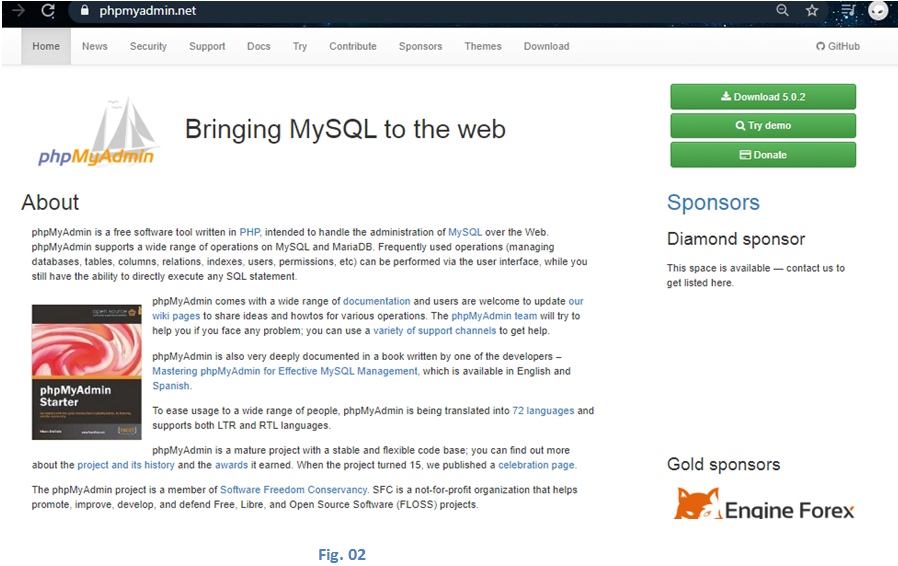
Step 3:Click on the ‘Download’ button from the above web page (Fig. 03), the browser will prompt a pop up as below and a quick download of the ‘phpMyAdmin-5.0.2-all-languages.zip’ ZIP file will take place.
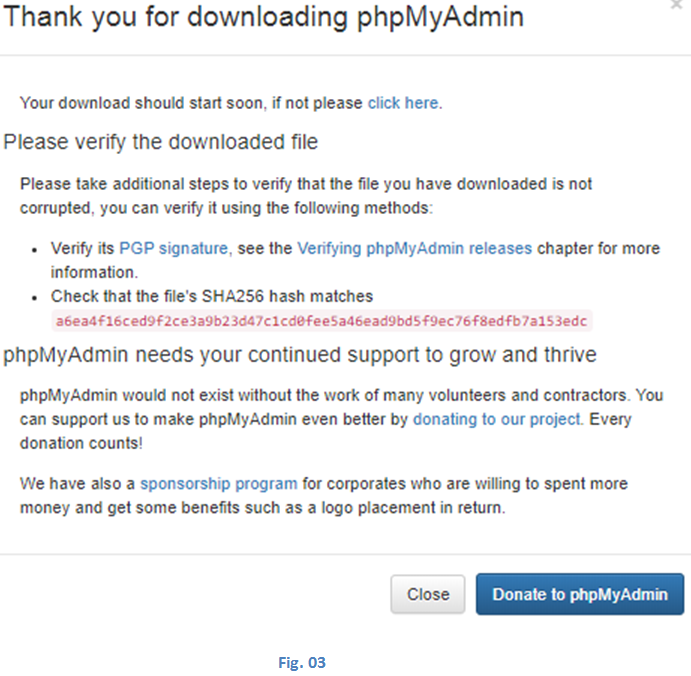
Step 4:Save the file in the desired location in the computer system (Fig. 04), and extract the contents of the file by right-clicking & selecting the ‘Extract All’ option from the list (Fig. 05).
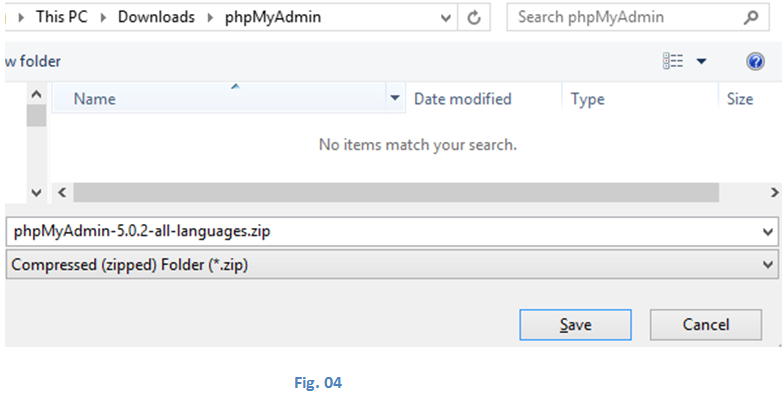
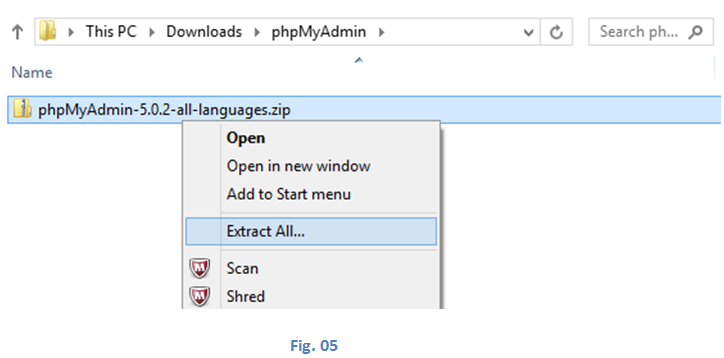
Step 5:Now, as the next step, locate the ‘htdocs’ folder (Fig. 06) in the Apache files from the local memory, typically it will be in the C: (C drive). Copy the contents of the ‘phpMyAdmin’ folder (Fig. 07) after extraction and paste the same to the Apache ‘htdocs’ folder. And then, rename the destination folder to ‘phpMyAdmin’, so as to allow the database to locate the files with the name as an indicator.

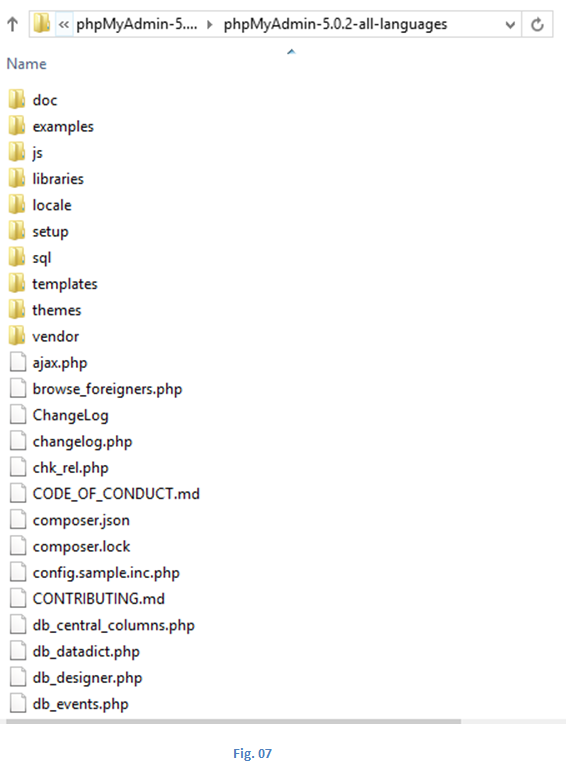
Step 6:Next step is to locate the ‘php.ini-production’ file (Fig. 08) from the PHP folder from the C: (C drive), and rename it into ‘php.ini’ (Fig. 09), as below, in order to make it easy for the phpMyAdmin tool to locate it when it is run,
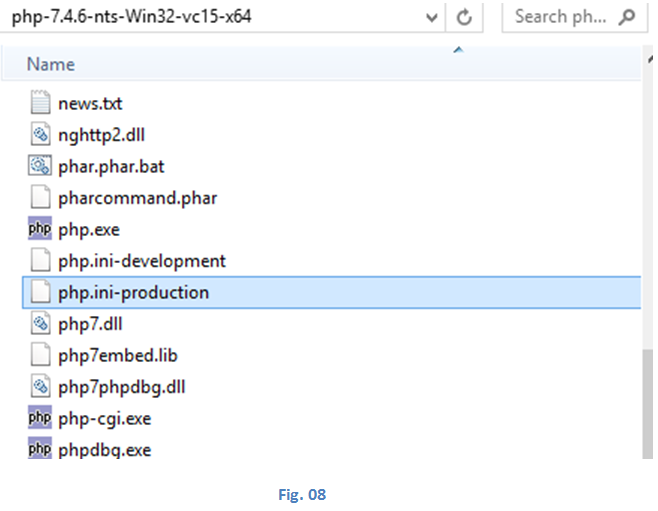
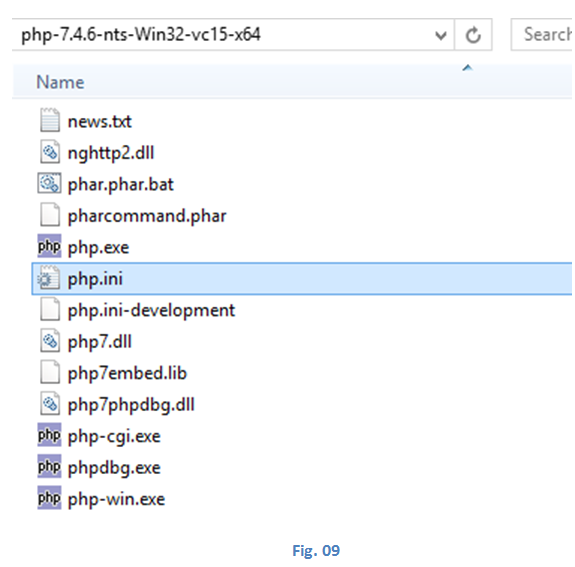
Step 7:For the next step, open the ‘php.ini’ with Notepad (Fig. 10), and edit the line with extension=php_mbstring.dll to remove the semicolon in that line and save the file, as it prevents phpMyAdmin to call in the PHP functions.
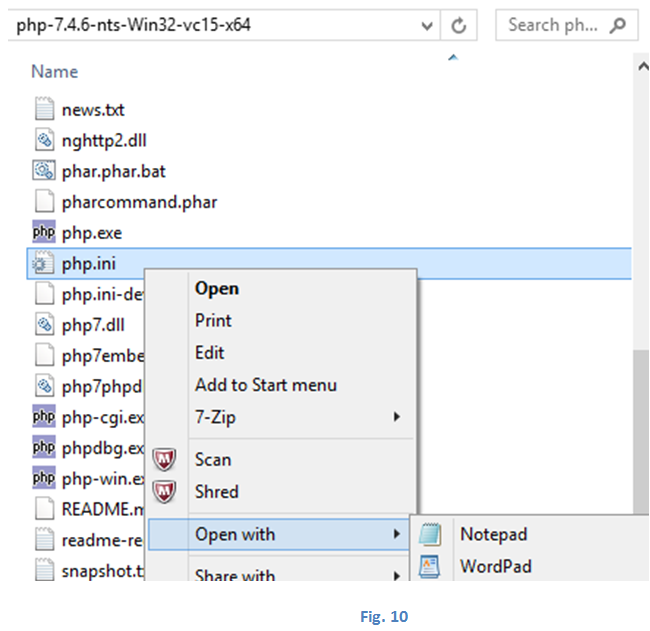
Step 8:The phpMyAdmin tool is ready to use now, and if required one can test the same by navigating to ‘http://localhost’ for loading the phpMyAdmin tool’s homepage.
Step 1:Open the web browser and go to the link: http://www.wampserver.com/en (Fig. 11) from there. Use the direct link, or google as ‘phpMyAdmin download’ and use the first link from the results.

Step 2:Download the WAMPServer application from there, which is also available for free (Fig. 12). The homepage of WAMPserver also contains details of the software itself, along with the list and features of all the supporting plugins, extensions, public projects, and the aliases such as the phpMyAdmin tool (Fig. 13).
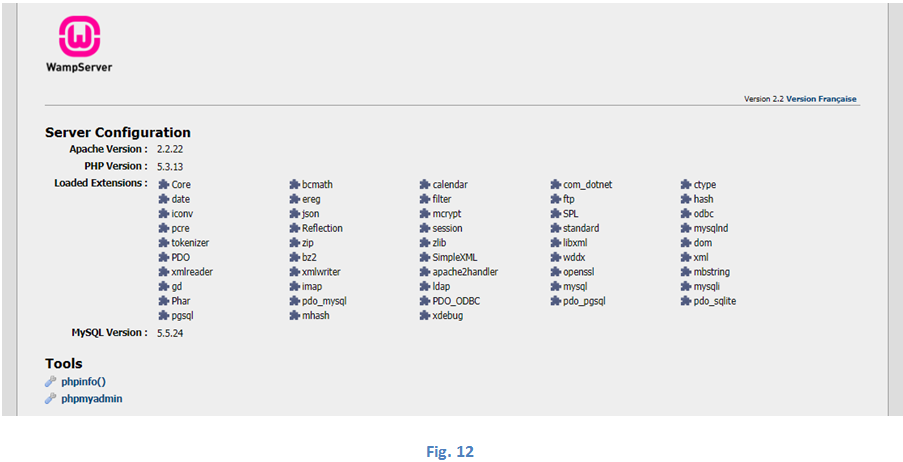
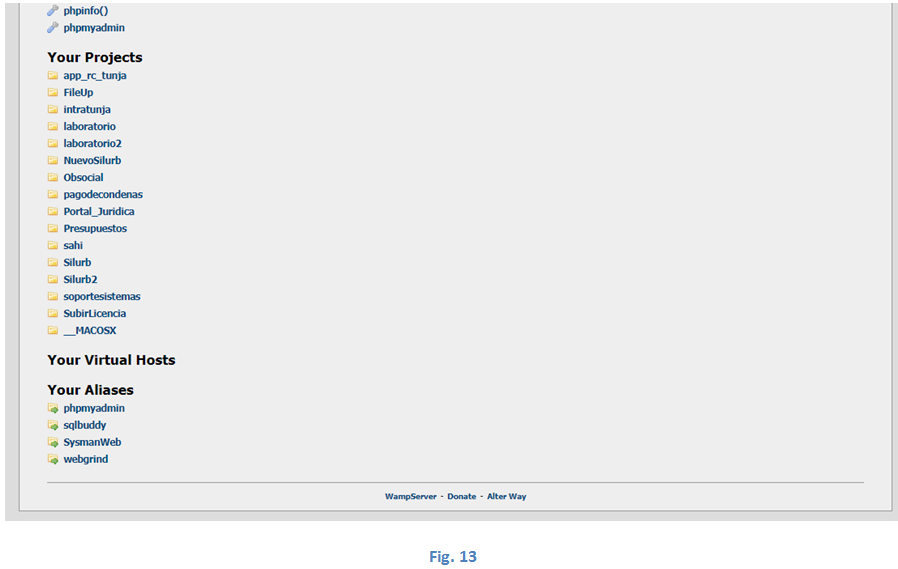
Step 3:Once the installation is complete, the WAMPServer will display all the items that come along with the package, such as in the below Fig. 14. As you can see, it is seen as a whole package of functional material, which includes the server like the Apache & localhost application, the phpMyAdmin supported databases like MySQL & MariaDB, contains options for importing & exporting almost all the common file types and the Administration tools like phpMyAdmin & Adminer. The WAMPServer logo can also be set under the windows notification box in the taskbar that will be shown as a hot pink W surrounded by a disconnected ring.

The phpMyAdmin tool is normally used on the database applications, as it provides easy and straightforward ways for managing and administering, connected to the common server such as the classic Apache server. This tool was created using the PHP scripting language, and it is used for carrying out Administration activities on the MySQL database.
以上是Install phpMyAdmin的詳細內容。更多資訊請關注PHP中文網其他相關文章!




